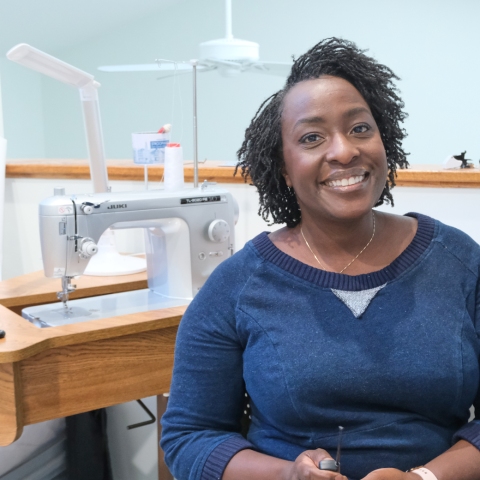
I’ve wanted a semi industrial, straight stitch only, sewing machine for many years now. Why? I wanted the speed and precision of one of these machines, without the bulk and space of a full industrial. I’ve always believed in having the right tool for the job. Most modern domestic zigzag sewing machines just do more than I need with decorative stitches. I decided / jumped finally at the 2020PE from Juki’s TL series because it’s a beautiful platinum colored metal (metal not plastic) and came with a set of quilting feet that I don’t need today, but wanted the option of having down the road.
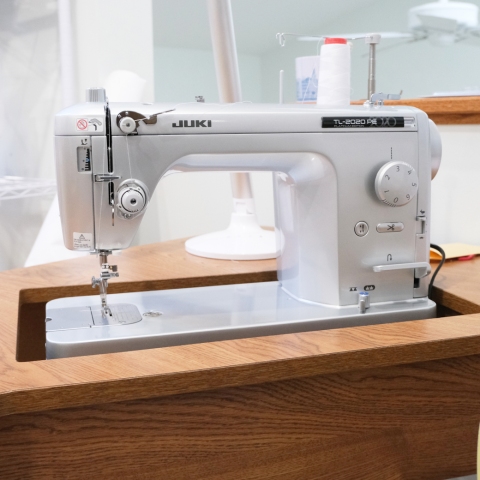
I’ve hesitated on purchasing one of these TL machines for ten years because they cost more than your average vintage household straight stitch machine. My Bernina 1260 from 1994 has served me quite well, but wasn’t up to some of the tasks I had in 2020. While sewing more masks than I will ever sew again in my life, I found the stitching unreliable, the tension glitchy and sometimes it would only sew in reverse or have a satin stitch. Not often during my regular course of sewing, but if I had large amounts of sewing like curtains, quilting or mask making, I just switched to a vintage straight stitch for reliability.
I haven’t bought a new household sewing machine in 20+ years, always preowned. But, they are also 50% faster at 1500 spm with more piercing power. I’ve read about the vintage machines like the Pfaffs and Singers and have a lovely Singer 201 myself, but I wanted (like really really wanted) the needle down default, a built in thread cutter and a knee lift. Bonus, it also takes household sewing needles. I bought new because I wanted this limited edition, twenties-themed platinum version and I have christened her Josephine Maker in honor of Roaring Twenties African-American Parisienne Josephine Baker.
I wanted to use Josephine Maker a little before I give a full on review. But here are my first impressions: solid, fast and beautiful.
The TL series seems marketed to the quilting and handbag market in the United States and I think that’s a mistake not to promote to gaement makers too. Well, it’s a way to get you into a higher end, computerized zigzag machine
Here’s a look at the feet included with the Japanese version. They are all industrial sewing machine feet geared to garment making:
*compensating feet are used for top and edgestitching.

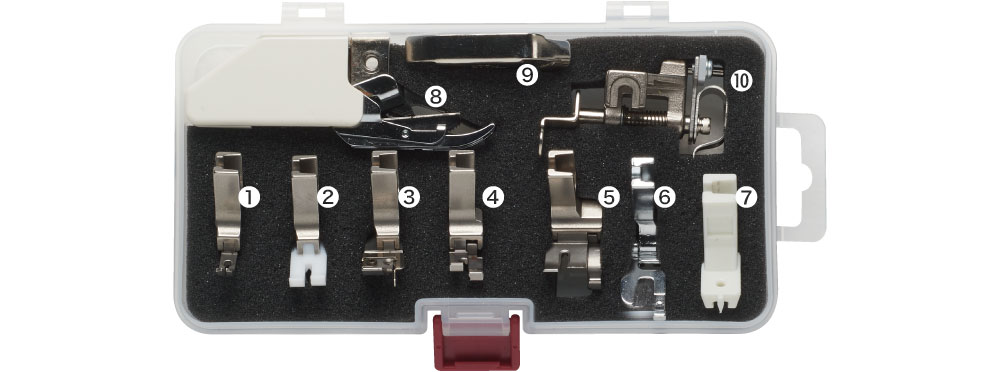
And the feet in the US, 90% quilting:

The Japanese feet are general sewing feet including a teflon (smooth), invisible zipper and industrial zipper foot. The US version is mostly quilting feet with a zipper and hemming foot included and the zipper foot is the home sewing machine style.
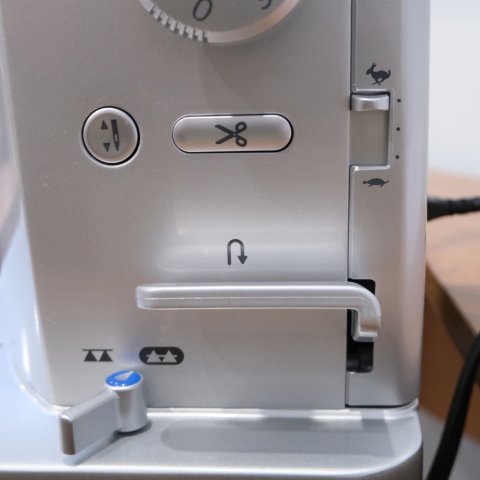
A feature I deeply wanted was to automatically cut thread. On the TL Series, you can cut your thread via the pedal by pushing down on your heel. There’s also a speed control/ governor button on the machine front for cutting thread.
While you can also control speed on the front of the machine, the presser foot is responsive to speed and I think the governor control is useless for me since I just keep it at “rabbit”.
The Japanese version of this machine has a separate pedal for cutting next to the foot pedal. After a few accidental cuts by pressing my heel backward, I was easily able to not do it when I didn’t mean to. They also include a rubber stopper you can put behind the pedal if it’s just not your bag.
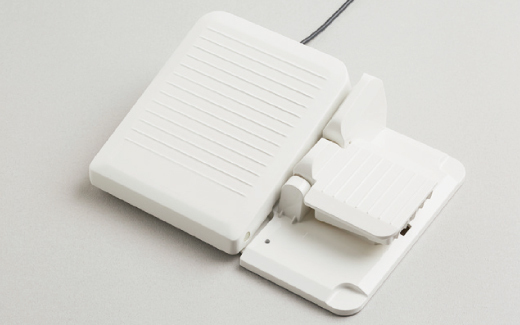
The presser foot pressure and tension dial have FAR more play than any domestic machine I’ve worked on. My fabric DOES NOT MOVE when under and sews perfectly straight. No drift whatsoever and the accuracy brought a tear to my eye. I was also able to reduce the pressure easily to work with lighter rayon fabric. It just has a wider and visible range for presser foot pressure than I found in a domestic. I used to just turn the knob on top and guess if I the right amount of pressure.
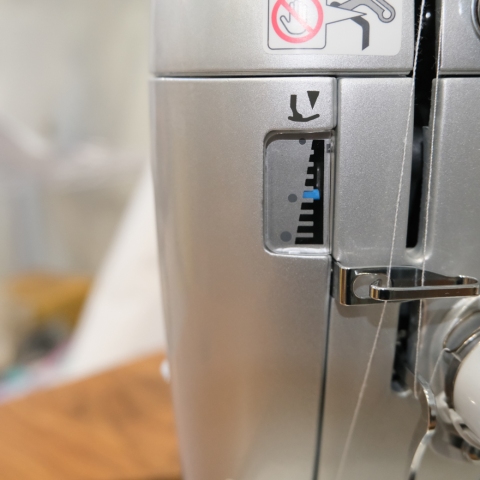
I will say it took some getting used to install the bobbin. Not a criticism, it’s just a little different.
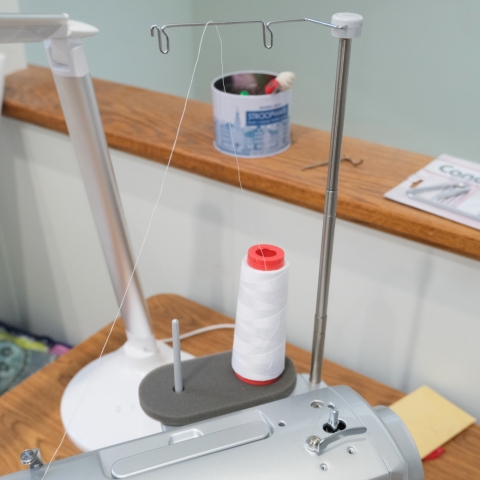
The machine can also takes full size cone thread, so I was able to use my serger spools and plan to buy the basic neutral colors in these larger, less expensive spools. Also, and this is a big plus to me, it can handle heavier topstitching thread that liked to choke up my domestic machines.
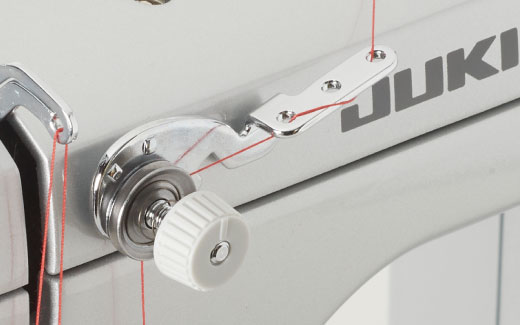
You can still sew buttonholes if you use a high shank buttonholer. I still have several machines with this capability, so it is not at the top of my priority list to track one down. They are sold on the Bunka website and ship internationally now (you’ll need to use Google Translate).
All this to say, if you’re an avid garment sewer, I don’t think the TL series should be overlooked. Think about it. In a commercial sewing environment, industrial straight stitch machines are the norm. I have a second home sewing machine if I want a narrow zig zag. But I also have a serger and coverstitch too. I do sew knits, but the bulk of my wardrobe sewing are wovens, and I just need a straight stitch for those.
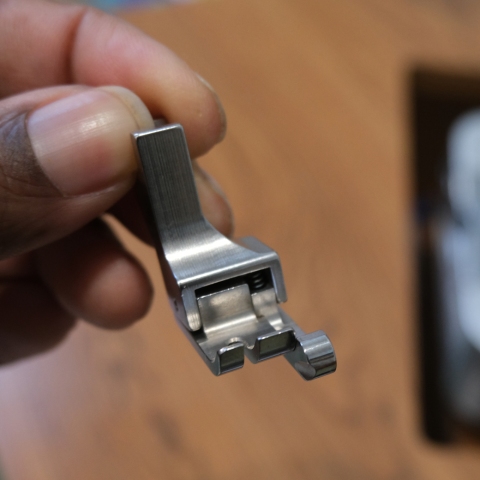
As a gadget girl, I also really love the ability to use generic industrial feet. I’ll elaborate in another post on these feet because as a home sewer, it is a whole new world. Each of my generic industrial feet are $7 vs say $35+ for a Bernina foot. Since your needle position on the Juki doesn’t move, you can use feet of varying widths for perfect edgestitching and top stitching. I also invested in the industrial version of the zipper foot instead of home sewing version that came with the machine (again, the Japanese version comes with the industrial hinged zipper foot).
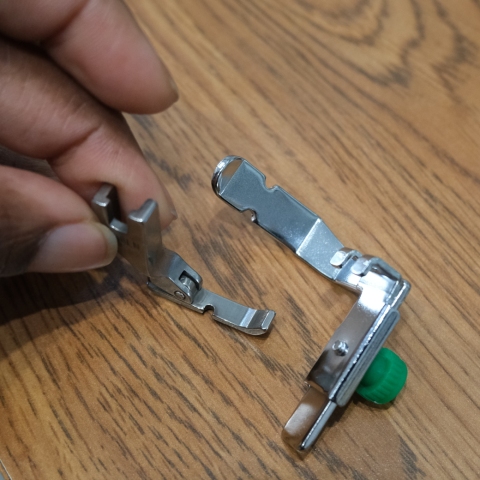
Another bonus is you can purchase separate feed plates for fine or heavy duty material. Fine being something you might sew with a 9/11 needle and heavy for sewing with a 16/18 needle. What??? So, most of my sewing is done with a 12 or 14 needle. If I wanted to sew something reallly thick (maybe heavy shearling?) I’d want a larger needle hole so the needle doesn’t run the chance of hitting the sides and provides more space for these heavier threads. Same with a thin material, you want a smaller space so the fabric doesn’t jam up in the hole.
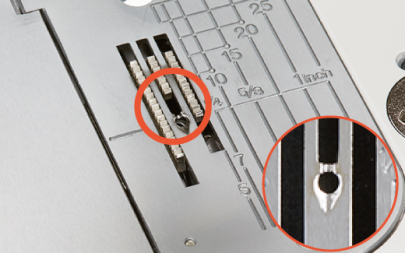
On my Bernina, I sewed with my straight stitch foot and plate whenever I could. I found it better for preventing material to get jammed in the needle hole. I have put a bug in my husband’s ear to tell my inlaws to get me a set for my birthday next month. Or some new baking dishes. Or a few books on fitting 🥴
There are a lot of different TL models and it can be confusing! Here’s a comparison chart. Note the 2200QVP is discontinued. The Haruka TL-18QVP replaced it and is only available from quilt shops. The 2020PE that I have is basically the same as the 2200QVP and the TL-18QVP. You can of course but online. But my local dealer was the same $1549 price since it’s brand new. But, also… Support your local community and shop local.

So far I’ve worked on upgrading some IKEA curtains and what a delight to not have the heavy material tug and pull at my machine. I did adjust the tension because I used a larger needle and the stich had not one bobble. The 2020PE is about 38 pounds, so it’s a beast against heavy drapes. I do have more home decor projects planned for this year. A quilt for my living room, throw pillows, seat pads for my dining room chairs and more curtains. I was dreading them on my Bernina because straight line sewing is made worse when the machine feels slow. My Bernina (Berleanah, the Baltimore Bernina) is around 900 stitches per minute, Josephine Maker tops out at 1500 spm. Even when I am pedal to the metal on the Juki, it’s still well within control range on a straight stitch and I could have skipped the speed control. I believe a true industrial is up to 5500 spm which is way more than I need.
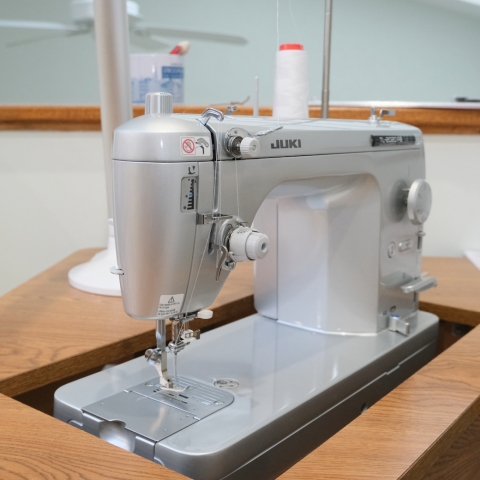
Obviously there should be some negatives, right? For me, this wasn’t a negative, but for others not having a free arm is going to be annoying. I’ve long sewn things like pant and shirt hems from the wrong side anyway to get an accurate stitch. I’d also note the needle not adjusting could be frustrating, but that’s what the different industrial feet are for. So, real negatives for me….
The light isn’t good and doesn’t spread much to the harp area, so I added an external light.
That’s it.
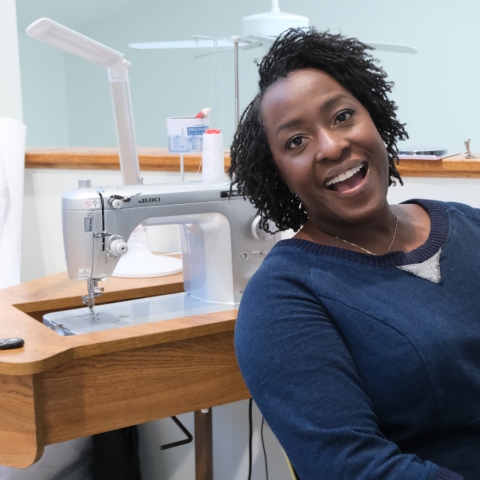
So that’s my initial insight into the Juki TL-2020 PE. I will reiterate that you by no means need the 2020 PE. The PE is limited to 2,000 machines in North America — but I don’t see a world in which they all sell this year? Then again, it took me 20+ years to buy a new from store machine and ten years of thinking about a TL so I am the WORST sewing machine customer. The 2020PE is super pretty, but unless that really matters to you, look for a TL 98, 2000, 2010 and always check and see if you can find one preowned. I found a similar model of the 2200 QVP (white) for under $1,000 pre owned on Facebook Marketplace. I think the TL98 or 2000 sells new at my dealer for under $800. The platinum edition was a treat to myself and a splurge.
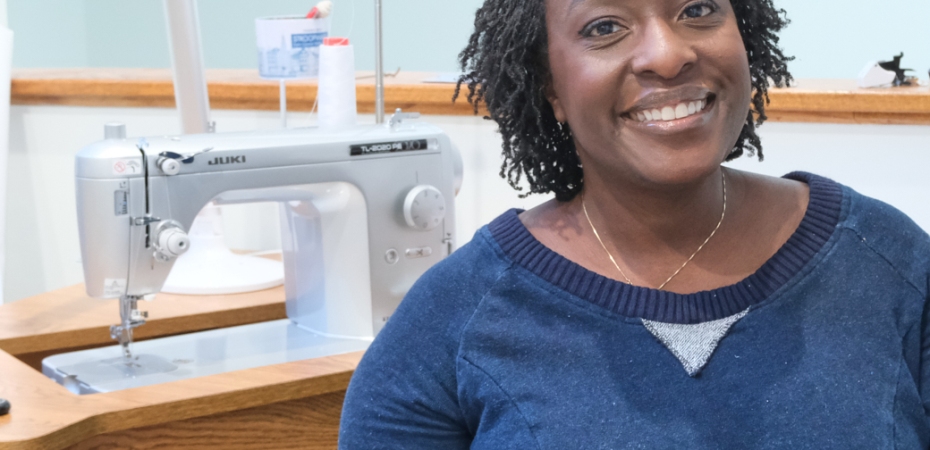
Oh my. It is a thing of beauty!
She is! I honestly love how she looks.
I never knew such a machine existed! Thank you for this most interesting review.
I spotted it for the first time in the back of one of my Bunka Garment Design books and was immediately intrigues. Since then, I’ve thought about getting one!
Great looking and sounding machine! Congratulations on being a proud owner! 😁
I love your Josephine!!
Congrats, Miss Celie!
Stay safe,
-Shira
Loved the wonderful review. I now have another sewing interest to check out!! Thanks again!!
What a beauty! I have a Juki domestic that I love, but the straight stitch isn’t as neat as I would like.
Such a cool machine! Loved this write-up and can’t wait for the next installment. You ARE going to show sewing those cushions, right?? 🙂
😄 I am! I just ordered the binder today and some leather needles from wawak (the material is vinyl).
I do NOT have room for another machine. I do NOT have room for another machine. Geez, I finally just dusted off the old ones. But I will definitely enjoy seeing what you and Josephine create together. (Love her name, BTW, and knew right away who she was named after.)
I’m oddly delighted that you treated yourself. And what better than shimmery platinum for Josephine Baker!
Thank you, Elle! I like many pretty and pricey things and usually, just avoid looking at them and make the practical choice. Treating myself for this really makes it special.
GREAT REVIEW! I have considered getting an industrial juke. Like you I have a Singer 201 and Bernina (a 430 however, I love so far — but it is aging).
That 201 saved my life in 2020 when I was sewing mask, after mask, after mask. My domestic Bernina couldn’t cut it.
Such a joy to read your posts! She is a beauty with a most excellent name. Can’t wait for the vicarious sewing. Thank you from El Cerrito, CA.
Thank you, Kim! I love writing about sewing. I’ve gotten less detailed here as time goes by, but I wanted to make a case for these machines and explain why I was willing to spend the money (especially after years of complaining about the costs of new sewing machines).
Congratulations! Sounds great. I have also toyed with the idea of getting an industrial machine in the past but one of the things that put me off was the weight, and if I would need reinforced floors?! Take it yours is not that heavy.
Ugh to the floors. Like you, I’m on a second / third floor and didn’t have great options. I also noticed a lot of the preowned machines were wired for 220v and I have 110v in the house. So while this might cost a little more than a true industrial, it’s less of a hassle for a home owner.
Do I see bags in your future? I’m obsessed with them lately and make them in Bernina 930. Envy your purchase. Congrats! If you venture to bags check out Siah Swag, Facebook and You Tube. Very engaging.
I have to say I sewed a few bags almost 15 years ago and they are not for me? Maybe now that I can do leather though….
gorgeous machine, happy sewing
Your hair looks fantastic in that last picture 🙂
Listen, you made my day, lol! I started loc’ing my hair a year ago and it’s finally at the “looks good” phase. But I only have my husband to pepper for compliments on it these days.
Thanks for the review.
Thinking about this machine versus the TL 18 QVP as I want to get back into garment sewing.
Are there any significant differences between the 2 models?
How could you write such a tempting article?. I have 3 Jukis – Exceed Pro, Coverstich and Serger and love them al. But your Juki is absolutely beautiful and I love your reviewl But how can I justify another machine when I’m just an amateur? Sob, sob…..
So easily!! I will say I spotted this style in a book ten years ago and thought about it regularly since. It’s definitely an intermediate machine I think? Does that help a little??
She’s so pretty!
A thing of beauty! I have been disappointed by the speed on my b740. It does handle heavy topstitching thread which was a plus. I’ve been contemplating an industrial for speed and for the feet! I watch a Japanese garment maker Saison? On You tube and the feet! My Bernina dealer sells the Juki semi pro machines but I am not sure where I would put it!
You know, people think it’s just home dec where speed matters. But even for me, sewing the long seam of a skirt or pants my Bernina just started to feel so slow? I guess as your skills improve, losing control just doesn’t feel like an issue. I’ll have to check out this youtube. I only have few so far but I am truly thrilled with the accuracy of industrial feet.
It’s atelier saison. It’s a Japanese high end garment factory I think though it’s not clear. I hate home dec but those long pants seams really could be sewn twice as fast.
You have the best explanation for why someone would want a industrial. I always wondered why anyone would want one.
I sewed a bag once on a friend’s industrial machine (it made my domestic cry “uncle”), so I had some idea how they could be useful? I think the presser feet which I will post more on later is a huge sell. And I think if you are really really into sewing, a semi pro is justifiable — if you have the space, desire and resources to purchase. The hardest part is explaining to people that no, you aren’t going to use it for just quilting, lol.
Thank you for such a thorough and inspiring review.
Thank you! I just remembered everything I want to know about a sewing machine review and tried to put it here, lol.
She’s a beauty! I bought a Juki a couple of years ago (DX7), and I’ve been pretty happy with it except that you have to use the knee lift to really get the foot up over bulkier stuff (my setup doesn’t allow for the knee lift, which is a huge bummer). Between this and someone else recently posting about their Juki serger, I’m having serious sewing machine envy.
Ahhh, yes. I am missing the knee lift right now. I need to get an insert to position my machine, and then I should be able to drill a new hole for the knee lift. I don’t think I plan on doing too much quilting on this, but I would love the extra rise for working with bulky coat material.
The only real reason I wanted to use the knee lift is so that I can use both hands on slippery fabrics or tricky bits and because it gives extra height than just the button does (the lever also can lift it extra high, but also requires a hand.) I’m trying to figure out how to make a table that is big enough for both machines + my cutting mat and that will lift. My boys are learning electronics, so between the three of us, I’ll bet we can figure that part out soon. 👍😊
You don’t need to ruin your inlaws with a stack of fitting books, you mostly need “smart fitting solutions” by k.king. It would have helped me a lot if he’d published that 50 years earlier 🙄. Demonstrates how to evaluate fit based on pulls and wrinkles, shows order of fixes on an array of real bodies. Seriously, the only one worth getting since the 70s Singer series “the perfect fit” with its invaluable set of pics – this is a butt considered average, this is a butt big enough to do this quick fix, this is a seriously big butt that needs this involved method, rinse and repeat for most anatomical variations.
Love “Josephine Maker”. My grandma got to see her dance in Paris in 1924! She’s been a family favorite ever since, one very tough cookie. And it sounds like yours will serve you well for the rest of your life..
I have it. I want the updated copy of FFRP and Sarah Veblen’s book. Not enough to buy either on my own, but enough to put it on a list so I don’t end up with something I don’t need. I would honestly prefer they not buy me birthday gifts, but I can’t seem to break them of the habit.
Thank you for such a helpful review. My machine is 35 years old and still going pretty well (I splurged with my first ever paycheck – money well spent!), but I’m aware that it’s showing signs of wear. I’ve put off even thinking about a replacement because a) I don’t want plastic, and b) I don’t need 76 different decorative stitches. I didn’t even know that ‘semi-industrial’ machines existed, but for the sort of sewing that I do, this definitely sounds worth investigating.
Oooo, so very cool! Now I have machine envy, lol. Great review!! You have opened a window I didn’t even know was there!
I wish they did more marketing in North America to garment sewers. I think it’s a happy medium for those of us who have considered industrials.
Wow, I feel like I learn something every time you post! Thank you for such a detailed review, and for all that you bring to blogging!
“accuracy brought a tear to my eye”…lol…love the way you write – thanks Miss Celie!
I promise you, my best writing is reserved for sewing 😁
I purchased a TL-2010Q a few years ago and I’m still in love with it! You’re going to love it for many years to come I’m sure.
Gorgeous machine, and I love her name. It’s tempting, but no room unless either Mom’s Necchi goes (NOT happening) or the Viking for the triple zig-zag, buttonholes, & 8-way stitching & some fancier stitches. We’ll not discuss the vintage/antique straight stitch machines waiting some attention to get them functional. :-O
I have no idea if this is still available, would fit your machine, or how well it works, but it might be an option if you really miss the knee lift on the Bernina –
http://www.shirleyssewingstuff.com/tools/sewing_tools_2.htm
there seem to be other options – do a search for “universal presser foot lifter”
You look good with your hair like that.
Thanks! I have a knee lift, I just haven’t installed it yet since I have to drill a hole in the desk. So I’m waiting for the table insert to come first, to make sure it’s in the right location.
On Sat, Mar 20, 2021 at 12:28 PM Miss Celie's Pants wrote:
>
Thank you for the awesome review. This exact machine will be winging its way to Alaska with my mom in a month and I can hardly wait! You list everything that is also important to me. I researched for two years before deciding on this machine. I currently use the discontinued Bernina 750 daily for garments & quilting, it’s been a great disappointment for me, not to mention the embarrassment of what I paid for it. I wish I’d known about the straight stitch Jukis back when I dove in head first and bought my “forever machine” only to have never quite felt it was. I am beyond excited to experience a true straight stitch that doesn’t drift, I have never sewn a straight stitch no matter how hard I’ve tried. Unfortunately, there is not a Juki dealer in Alaska to pick up machines, other feet or sole plates from. Where did you find parts? My Bernina tech suggested Superior Thread cones years ago, I pick them up through Green Fairly Quilting online who happens to be next door to the Superior warehouse. Superior thread produces very little lint while being fairly affordable and come in a respectable number of colors. Enjoy your sewing, I know that I will! Thanks for sharing.
I hope you enjoy it as much as I am. I wasn’t quite sure what to expect when I added it to my rotation, but I am 1000% thrilled so far! The industrial feet options will delight you, as well as the amazing straight stitch.
On Sat, Mar 20, 2021 at 6:28 PM Miss Celie's Pants wrote:
>
As someone who has been using industrial machines for over 5 decades, welcome to the dark side of home sewing! Now you know how slow that Bernina or even the vintage all metal machines can be. Now you know how easy it is to sew bulky seams, and how straight and even the seams can be. Now you know you can go pedal to the metal and not fear wearing out your machine. Your complete journey to the dark side is when you realize you need that highly efficient knee lift that leaves your hands free to manipulate the fabric and not the foot lift lever.
Two pieces of advice:
I always use the “skinny foot” as my zipper foot. The conventional zipper foot is better used as a piping foot.
You can sew heavier leathers with your machine by using the Teflon foot, Tex 60 thread on top, Tex 40 thread in the bobbin, and a 16 needle.
In case your wondering, I regularly use a 5400 series Juki industrial needle feed for most of my sewing. For buttonholes, I have a Pfaff 130 set up with a Singer buttonhole.
Finally, how about an industrial serger?
Thank you, John! This is really helpful. I’m actually making dining room chair pads from Naugahyde so your timing is perfect. I did buy a Tex 40. But was wondering if it was strong enough. I did add a Tex 60, but found a better match in Tex 50. Just curious if that might work? Luckily, I bought so many different Size 16 needles, I should be able to play around (leather, denim, topstitching). Since I’m looking at up to three layers of the faux leather (three if I do duck cotton on the bottom) I wanted to be prepared.
And I must rebuke you. If I bring home an industrial serger, my husband will lose his mind 😅.
I did get a Teflon foot from Wawak and that skinny foot locally. Thank you for the excellent advice! So, you’d say not to bother with a specific piping foot? And I’m binding the edges of my dining room chair pads and bought a binder and binding foot too. Hoping the material won’t be too thick for the binding attachment.
Thanks again! Always appreciate solid advice.
On Sun, Mar 21, 2021 at 9:06 AM Miss Celie's Pants wrote:
>
Congratulations on getting a new machine. I’m glad you found one that meets your needs because that’s what’s most important. It will be interesting to hear/read your review once you’ve sewn on it for awhile!
I keep debating this machine. I bought a singer copy that is a Japanese straight stitch machine from the 50s which is a power house, but don’t have room in my studio to set it up. I paid by the pound (lol) the thing is metal and weighs about at least 35 pounds, not a featherweight to be sure! My hesitancy is that my Pfaff which I love for many reasons and is the last year the machines were made in Europe cannot made a decent buttonhole. Interested to learn more about buttonholes from this machine. We have one in our store (esthersfabrics) so I sew on it, but mainly I use it for straight stitching on quilts. Can’t wait to see what you do on this machine!
The buttonholer is also over $100, which seems high when I can use my other machines? But then again, I do go to a buttonhole guy when I have a heavy coating or such. I’m really excited to take this for a real ride!
I just bought a pre-owned Juki, not this model, but with some of the nifty features you mention. I love its huge feed dogs, thread cut, knee lift and adjustable pressure. It sews so nicely. Yours looks awesome, and will be so cool to see what you turn out with it.
I am so jealous. This machine would have changed my life. Sadly, nearly 50 years ago I desperately wanted a heavy duty machine. But that was before the Internet—long before—and I had no idea where I could find one. (Now I realize I probably could have gone to the garment district in Miami and simply asked someone.) Oh, well. Now I’m simply green with envy, and I expect (demand?) a show of Josephine’s talents soon! (There’s a pastry shop in Paris called Josephine Bakery.)
It’s so awesome and I must go to Josephine Bakery someday. I’ve just been piecing on it and am glad I waited to buy? It’s kind of making me appreciate it more?
I am green. I’ll admit it. That is a SWEETHEART.
I am working up my nerve to drill out an enlarging angle on the needle hole on my alternate throat plate (to accomodate a chain stitch attachment). That photo is just for me.
I have passed on a couple of industrials because I just don’t have room for a different table in the cave. One of them would have been free, and it breaks my heart to have said no.
I’m with ya. If I’d had more space and flexibility, I’d have gotten on board the industrial train some time ago. I was reading on a Juki facebook page that lots of people just make that hole a little bigger. I’ve just been piecing a little with the TL2020 and it is a dream. I see why quilters went nuts for this series.
Thank you so much for the educational post, looking forward to the presser feet recommendations
Such a cool machine! I hope you get a lot of great use and enjoyment from her 🙂
I’m so fascinated by this machine. You’ve written a great review. I’d love a follow-up with a demonstration of all the feet. I totally love sewing machine feet and accessories.